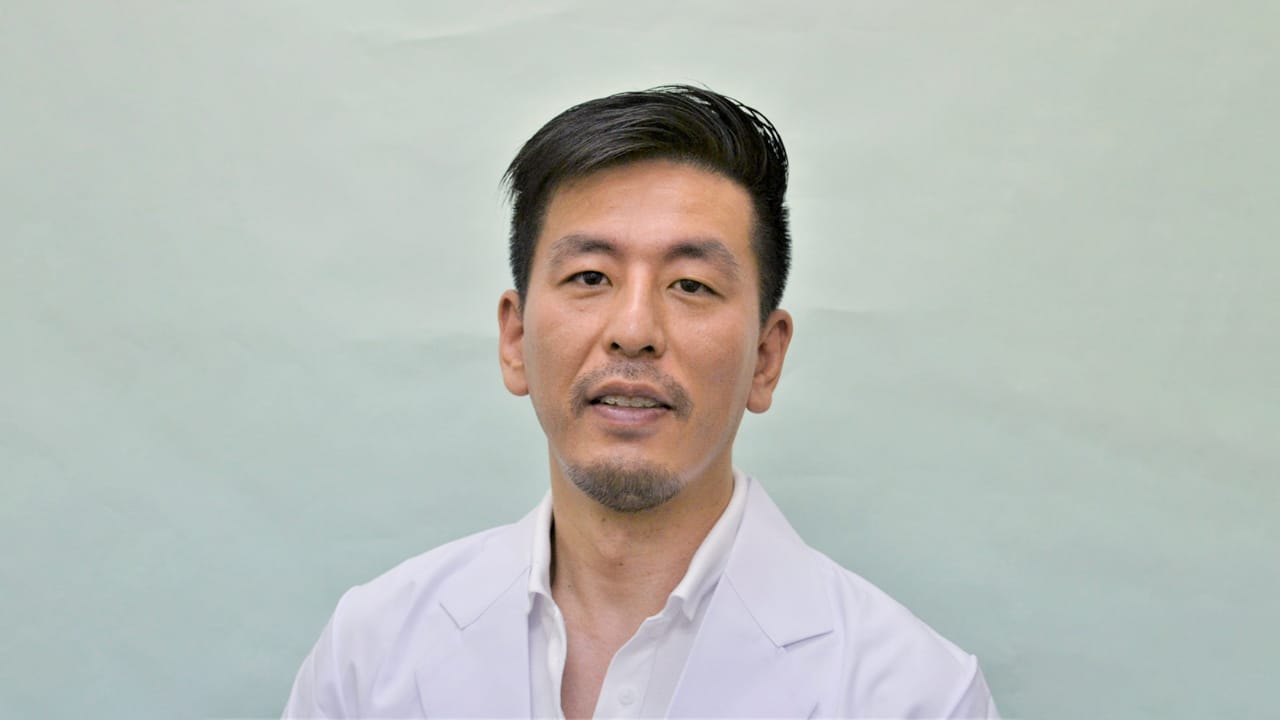ASOURCE®TIMES

国際医療福祉大学
医学部 教授(同大学病院 救急医療部)
志賀 隆
千葉大学医学部卒業。
初期研修後、沖縄の米国海軍病院、浦添総合病院救急部に勤務。
米国にてミネソタ州メイヨー・クリニック研修医、ハーバード大学マサチューセッツ総合病院指導医を経て、東京ベイ・浦安市川医療センター救急科部長。2017年国際医療福祉大学医学部救急医学講座准教授・同大三田病院救急部長、2019年より現職
米国でER型救急医療を学び、帰国後に「断らない救急」をゼロから立ち上げた志賀隆氏。
ポイントは「社会に貢献する医療という哲学をスタッフと共有すること。
そしてスタッフへの感謝を忘れないこと」と話す。
学生時代に米国のテレビドラマ「ER」を観て、ER型救急という存在を知り、興味を抱いたのが、救急医の道を歩むきっかけとなりました。
米国留学をしたいという思いもあり、留学に向けて勉強をするために、初期研修後は沖縄の米国海軍病院と浦添総合病院に勤務しました。そこでの英語での勤務経験を生かして、2006年から米国・メイヨー・クリニックで救急科に勤務することができました。
帰国後、私が学生時代を過ごした千葉県浦安市の東京ベイ・浦安市川医療センターで「ER型救急」の立ち上げの話があり、私に救急科の部長として声が掛かりました。まだ35歳で管理職の経験もなかったため迷いましたが、私が救急医を目指したもう一つのきっかけである、福井大学の寺澤秀一先生に「うまくいかなくて当然。うまくいったら君の手柄になるよ」と背中を押され、ゼロからのER型救急の立ち上げに挑戦しました。
ER型救急とは、ひと言で言えば、重症度、傷病の種類、年齢によらず、すべての救急患者を救急医が救急医療センターで診療するスタイルです。東京ベイ・浦安市川医療センターが立地する東葛南部医療圏には大学病院が2つあり、充実した環境のように見えました。しかし、浦安市川地域からその他の地域に搬送される救急患者さんの搬送率は2011年当時22%と高いものだったので、断らないER型救急を作れば浦安市川地域、ひいては東葛南部医療圏全体に貢献できると考えました。
新規事業ではヒト・モノ・カネの経営資源をどう確保するかが、成否を分けます。まず“ヒト”(人材)については「米国に行かなくても米国式の卒後研修を実践で学べる」点を前面に押し出して募集しました。その結果、卒後3〜10年目のやる気のある若手医師が集まり、2012年の開設時には救急専門医7人、後期専攻医9人でスタートすることができました。
米国式研修という柱を立てたことで、救急科にとって重要なパートナーである総合内科、総合外科、集中治療科にも共通した志が生まれ、運営の基盤を作ることができました。また新しいスタイルの救急を軸とした急性期病院との評判が立ち、看護師やコメディカルの方も多く集まりました。
“モノ”についてはERにおける核である救急外来の設計にも注力しました。私が赴任した時点で、既に診察室が5つ、救急車の受け入れスペースが3床という設計図が出来ていました。しかし私は「充実した設備がなければ、充実した診療はできない」と主張し、多くの議論を重ねた上で、最終的に6つの診察室と9床の救急車受け入れスペースを持つ救急外来となりました。320列の最新式CTを導入し、ICUや手術室に直行できるエレベーターへの導線も短くしました。
“カネ”(予算)については、地域医療振興協会・吉新通康理事長ならびに東京ベイ・浦安市川医療センターの神山潤CEOのご理解に大変感謝しています。「年1万台の救急車を受け入れる救急部門を作る」と息巻く米国帰りの若い救急医の話に耳を傾け、「それならやってみなさい」と挑戦させてくれたわけですから。
開設当初は、近隣の医院や病院の先生から「若い医師ばかりいる病院には紹介したくない」「あの病院は若い医師ばかりで質が低い」などのご意見をいただきました。ただ「お断りせずに気軽に紹介をお受けする」「丁寧に逆紹介をする」を続けていくうちに、「東京ベイに運んでほしい」「東京ベイに送りたい」という患者さんや医療機関が増えていきました。開業医の先生の診療時間外である夕方や土曜の午後には、患者を東京ベイに紹介する「開業医ホットライン」という専用回線が鳴りっ放しということもありました。
救急車の搬送件数は初年度こそ7,000台程度でしたが、すぐに1万台に増えました。これはERとして高い応需率を保ち「困ったときの最後の砦」となるように努力を続けてきた結果です。30km以上離れた地域から、10件以上断られたという患者さんを受け入れたこともあります。救急(消防)とは、受け入れた患者さんがどんな転帰になったかなどの情報を交換ノートでやり取りし、年1回振り返りのカンファレンスを開催することで、救急隊のみなさんとの連携も密になりました。
こうして受け入れ患者が増えるにつれ、当然のことながら、スタッフは多忙になりました。全国の救急センターでは、疲労が蓄積して“燃え尽きて”しまうスタッフが少なくありません。スタッフが疲弊せず、モチベーションを保ち続けられるよう、いろいろな工夫と努力を続けました。
まず私自身が臨床現場に立ち続けました。実際に他のスタッフと共に夜も働き、忙しさ・辛さ・苦しさを分かち合いました。劇的な救命ができた喜び、難しい症例の問題を解決できた喜び、他部門とうまくコラボレーションできた喜びを共有しました。そうした日々のコミュニケーションを通じて、私がぶれずに持ち続けている「社会に貢献する医療」という哲学が伝わり、スタッフのモチベーションを維持する基盤になったと思っています。
次に勤務体制をシフト制にし、夜間の勤務時間を22時〜8時までの10時間に短くしました。多くの診療科の当直は17時〜9時までの16時間ですが、それでは体力が持ちません。そして夜間も必ず3人の救急科の医師が待機することにしました。16人という人数がいたからこそ実現できた体制と言えるでしょう。
さらにスタッフにお願いしたのは、お互いに「褒めること」「思いやること」「感謝をすること」です。円滑な人間関係の職場であれば、バイタリティの高い状態で働けると考えたからです。情報公開・権限移譲・わかりやすいルールの三原則も実施しました。私の持っている情報は可能な限りどんどん部門内で共有し、スタッフには感染症の担当、外傷の担当、中毒の担当といった具合に役割分担を決めて権限委譲し、主体的に仕事に取り組める仕組みにしました。
東京ベイ・浦安市川医療センターで勤務後、私は国際医療福祉大学に移りました。現在では、猛威を振るっている新型コロナウイルスに感染した可能性の高い患者さんも診療しています。本院の救急外来では、感染症対策として、グリーンゾーン・イエローゾーン・レッドゾーンの3つに空間を分けています。そのうち、防護服などのPPE(個人用防護具:Personal Protective Equipment)を着脱するイエローゾーンを除いた2つの空間で診療を行っています。グリーンゾーンでの診療は、発熱、咳、味覚・嗅覚障害、低酸素血症、呼吸困難などの症状がない人、感染者との濃厚接触、旅行や東京での会食などの情報がない方を対象とし、2つの陰圧診療室があるレッドゾーンでは、症状があるか、濃厚接触の可能性が高い人などを診療しています。徒歩で来院された患者さんについても新型コロナウイルスへの感染の疑いが強ければレッドゾーンで診察しますし、疑いが低い方も念のため陰圧診察室で診療することもあります。
こうした取り組みも含めて、新しい環境へと移り、より力を入れていることがあります。それが“人材教育”です。救急医療を変えていくには、多くの人材を教育することが大切だと考えています。東京ベイ・浦安市川医療センターでは1年間に接することのできる後進は100名弱でしたが、国際医療福祉大学では医学部、看護学部、保健医療学部の学生、研修医など合わせて年間400人ほどに救急医療を教えることができます。このように、日本の救急医療の変革を目指して、今後も実践と人材育成に取り組んでいこうと考えています。